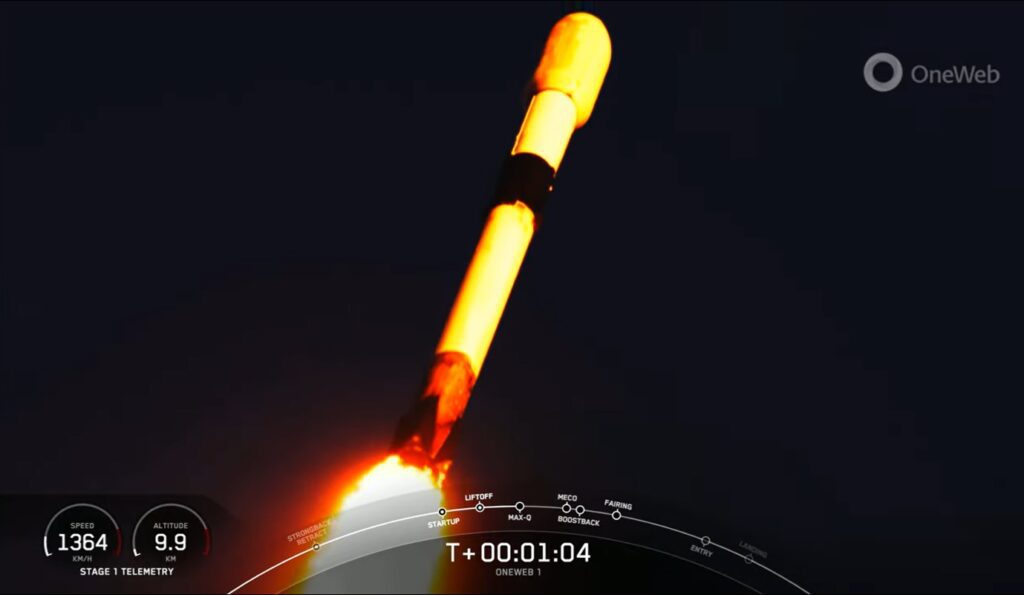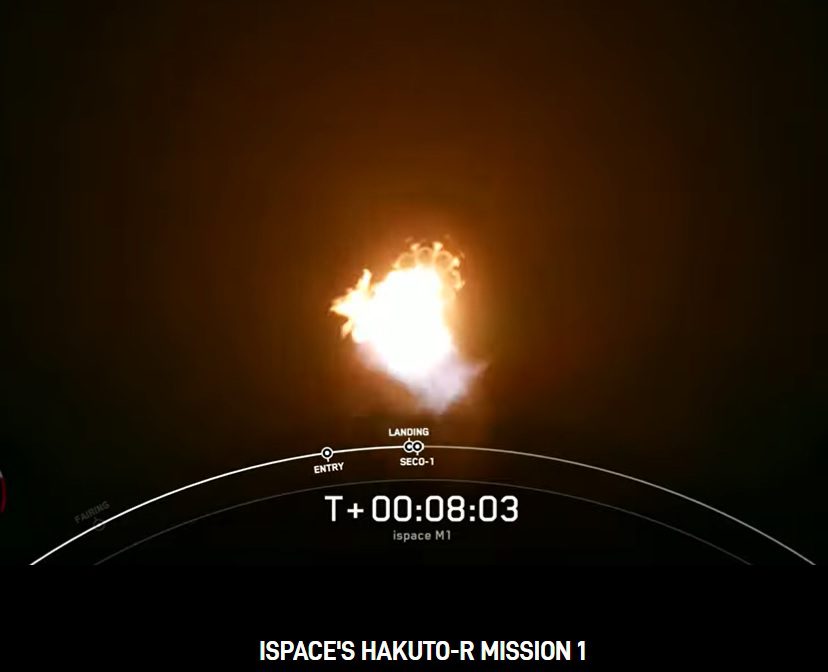SpaceX successfully launched a Falcon 9v1.2FT Block 5 rocket from the Kennedy Space Centre (KSC), Florida, USA at 2227 GMT on 8 December. The vehicle was carrying forty OneWeb communications satellites (465 plus 39 others) to go into the OneWeb low Earth orbit (LEO) constellation. The reusable B1069 Falcon 9 first stage, on its fourth flight, successfully landed back on land at the Landing Zone 1 at Cape Canaveral close to the launch site in Florida.
SpaceX successfully launched a second Falcon 9v1.2 FT Block 5 rocket from the East coast when it lifted off from Cape Canaveral, USA at 0738 GMT on 11 December. The vehicle was carrying Hakuto M1 Lunar Lander, Lunar Flashlight and Rashid. The B1073 reusable Falcon 9 first stage, on its fifth flight, successfully landed on Landing Zone 2, again back at Cape Canaveral. The Hakuto M1 lunar lander is expected to land on the Moon within the next few days. It is carrying the Rashid lunar rover for the UAE. Lunar Flashlight was originally planned to fly a solar sail but is instead using conventional thrusters albeit green ones to control it as it searches for water on the Moon.
SpaceX is now vying with China for the largest number of launches for this year. China is clearly second in the “international” launches table at 59 orbital launch attempts – breaking China’s own launch record, but SpaceX is almost singlehandedly holding up the US’s position with 73 orbital launches. SpaceX has, to date, made 56 orbital launch attempts (figures corrected since original publication).










